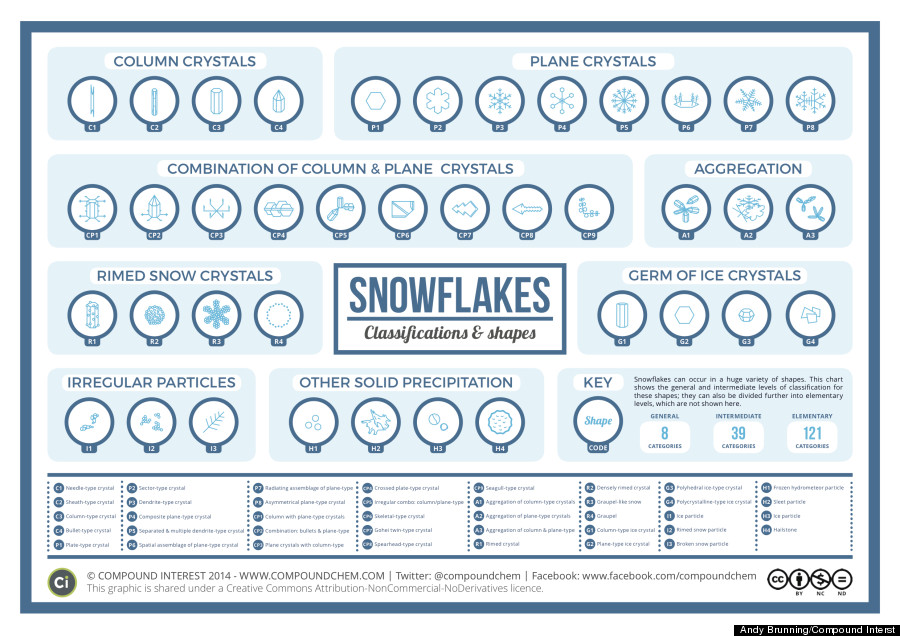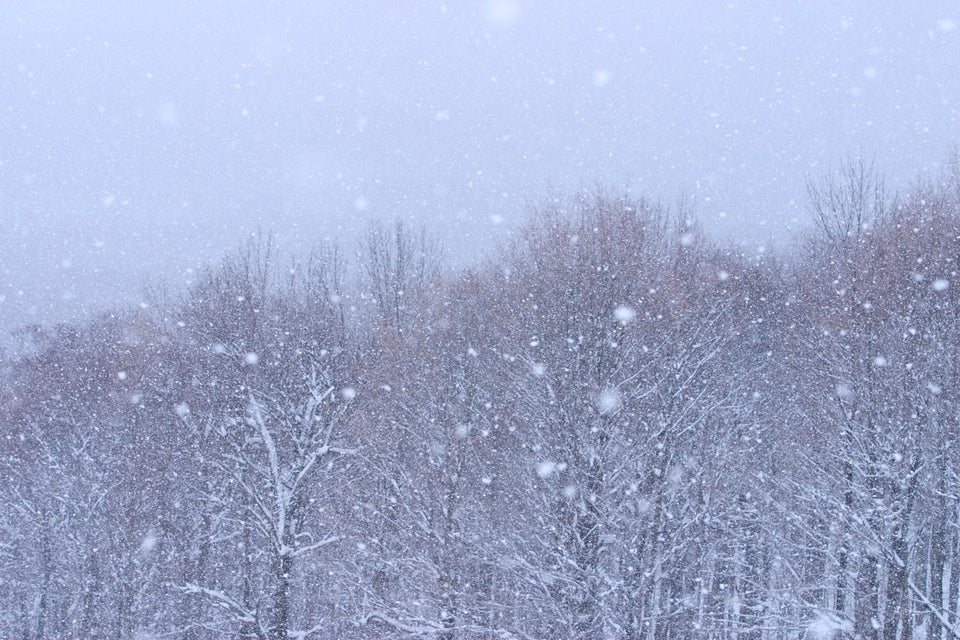Each snowflake may not be so unique after all.
While no one snowflake is exactly the same as another on a molecular level, it turns out that all snowflakes fall into one of 35 different shapes, researchers say. Just take a look at this infographic of the different snowflake shapes from chemistry teacher Andy Brunnin, who authors the blog Compound Interest:
The graphic uses data from the global classification of snow crystals, ice crystals, and solid precipitation published in the journal Atmospheric Research in 2013.
How exactly do snowflakes form their amazing shapes?
A snowflake starts as a tiny grain of dust or pollen floating in a cloud. Water vapor from the air sticks to the grain and freezes, forming into a tiny hexagonal crystal. From there, more vapor condenses on the crystal as it travels to the ground, and the snowflake's "arms" take shape.
"We still don’t know the precise variables behind the formation of particular shapes," Brunnin wrote on his blog, "although researchers are continually working on theoretical equations to predict snowflake shapes."
Smithsonian reported that, though snowflakes are stunning to observe, scientists classify snowflakes and analyze how they form to better understand how crystals may be used in a host of applications, from silicon to semiconductors in computers and electronics.
So, there's even more reason for the sky to, "Let it snow! Let it snow! Let it snow!"

